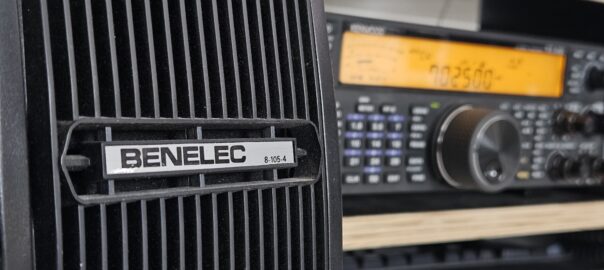If I’m listening to a CW signal on 7.025 MHz, what magic transpires such that my receiver outputs a 500 Hz tone for me to listen to?
In the lineage of CW receivers, we went from receivers of Spark Gap signals, to the common heterodyne analogue receivers, and the more recent Software Defined Radios (SDR). While this discussion will focus on heterodyne receivers, it is analogous to SDRs, where similar processes take place within the digital domain.
The central player in our RF to AF adventure is the Beat Frequency Oscillator (BFO).
What problem does the BFO solve?
A CW signal is simply a sine wave of constant amplitude and frequency. Given that it has no modulation, if you tuned an AM or FM receiver to the signal’s frequency, you would hear nothing, other than perhaps some faint pulsing, because there’s nothing to demodulate.
The BFO then is responsible for converting a Radio Frequency (RF) signal into an Audio Frequency (AF) signal, which it achieves via frequency mixing.
How does frequency mixing work?
Conceptually, mixers are simple devices. If we feed into the mixer two frequencies, we will receive two transformed frequencies out: the sum and difference of those frequencies. Take the example below, where feeding in 7,025 and 7,000 kHz, outputs a waveform with 14,025 and 25 kHz frequencies (7025 + 7000 = 14025; 7025 – 7000 = 25)

What exactly is the BFO and how does it use mixing?
If we know that we want to output a 500 Hz tone, we need an oscillator which will generate a signal with a frequency 500 Hz away from the CW signal. That oscillator is called the Beat Frequency Oscillator (BFO). This time we feed in our CW signal at 7,025, and our BFO signal at 7,025.5 kHz, to get 14,050.5 kHz and 500 Hz out. Of course, we care not for the summed frequency of 14,050.5, so is filtered out leaving only the 500 Hz AF tone.

At this point we have an audio frequency, which with some amplification can drive a speaker or headphones, and ta-da, we can copy that silky smooth CW being sent by our partner!
The block diagram above is actually that of a direct conversion receiver which you can build with very few components. They are great for experimentation but rather limited and a far cry from what we use in our shacks. Stay tuned for the next instalment where we’ll consider how the BFO is implemented in the radios we use every day, and how we tune for a CW signal.
Lance
September 2025
